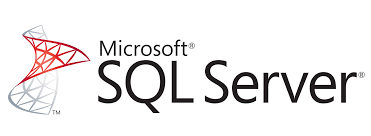Guide to Date Data Types in SQL Server: Optimizing Database Performance and Storage
Table of Contents
- Overview of SQL Server Date and Time Data Types
- Detailed Explanation of SQL Server Date Data Types
- Choosing the Right Data Type for Your Needs
- Conclusion
Overview of SQL Server Date and Time Data Types
SQL Server provides six main date and time data types:
- DATE
- DATETIME
- SMALLDATETIME
- TIME
- DATETIME2
- DATETIMEOFFSET
Each type has unique features designed to meet different precision, range, and storage requirements.
Detailed Explanation of SQL Server Date Data Types
1. DATE
Purpose: Stores only the date without time.
Range: 0001-01-01 to 9999-12-31
Format: YYYY-MM-DD
Storage Size: 3 bytes
Example: ‘2024-10-31’
Use Case: Ideal for applications that only need to record dates, like birthdays or events.
2. DATETIME
Purpose: Stores date and time with fractional seconds.
Range: 1753-01-01 to 9999-12-31
Format: YYYY-MM-DD HH:MM:SS[.mmm]
Storage Size: 8 bytes
Example: ‘2024-10-31 13:45:30.123’
Use Case: Widely used for applications that need date and time data but not high precision.
3. SMALLDATETIME
Purpose: Stores date and time with less precision.
Range: 1900-01-01 to 2079-06-06
Format: YYYY-MM-DD HH:MM
Storage Size: 4 bytes
Example: ‘2024-10-31 13:45’
Use Case: Suitable for applications with older data or where time precision isn’t critical.
4. TIME
Purpose: Stores only the time of day.
Range: 00:00:00.0000000 to 23:59:59.9999999
Storage Size: 3 to 5 bytes, depending on precision.
Example: ’13:45:30.1234567′
Use Case: Perfect for applications storing only the time, such as schedules.
5. DATETIME2
Purpose: Stores date and time with higher precision than DATETIME.
Range: 0001-01-01 to 9999-12-31
Storage Size: 6 to 8 bytes, based on precision.
Example: ‘2024-10-31 13:45:30.1234567’
Use Case: Suitable for applications needing high precision and efficiency.
6. DATETIMEOFFSET
Purpose: Stores date, time, and time zone offset.
Range: 0001-01-01 to 9999-12-31, offsets from -14:00 to +14:00
Storage Size: 8 to 10 bytes, based on precision.
Example: ‘2024-10-31 13:45:30.1234567 +02:00’
Use Case: Perfect for international applications requiring time zone tracking.
Choosing the Right Data Type for Your Needs
Selecting the correct date data type can optimize database performance and reduce storage needs:
- DATE: Use when only the date is needed without time.
- DATETIME: For date and time without high precision.
- SMALLDATETIME: For older data with minimal time precision.
- TIME: For applications needing only the time of day.
- DATETIME2: For higher precision date and time storage.
- DATETIMEOFFSET: For storing date and time with time zone offset.
Comparison of Date Data Types
| Data Type | Date Range | Time Range | Precision | Storage Size |
|---|---|---|---|---|
| DATE | 0001-01-01 to 9999-12-31 | None | Days | 3 bytes |
| DATETIME | 1753-01-01 to 9999-12-31 | 00:00:00 to 23:59:59.997 | 3 milliseconds | 8 bytes |
| SMALLDATETIME | 1900-01-01 to 2079-06-06 | 00:00:00 to 23:59:00 | 1 minute | 4 bytes |
| TIME | None | 00:00:00.0000000 to 23:59:59.9999999 | 100 nanoseconds | 3-5 bytes |
| DATETIME2 | 0001-01-01 to 9999-12-31 | 00:00:00.0000000 to 23:59:59.9999999 | 100 nanoseconds | 6-8 bytes |
| DATETIMEOFFSET | 0001-01-01 to 9999-12-31 | 00:00:00.0000000 to 23:59:59.9999999 + Time Zone Offset | 100 nanoseconds | 8-10 bytes |
Conclusion
Choosing the appropriate SQL Server date data type can optimize performance and reduce storage needs. By considering factors like precision, range, and storage, you can improve efficiency for your application.
